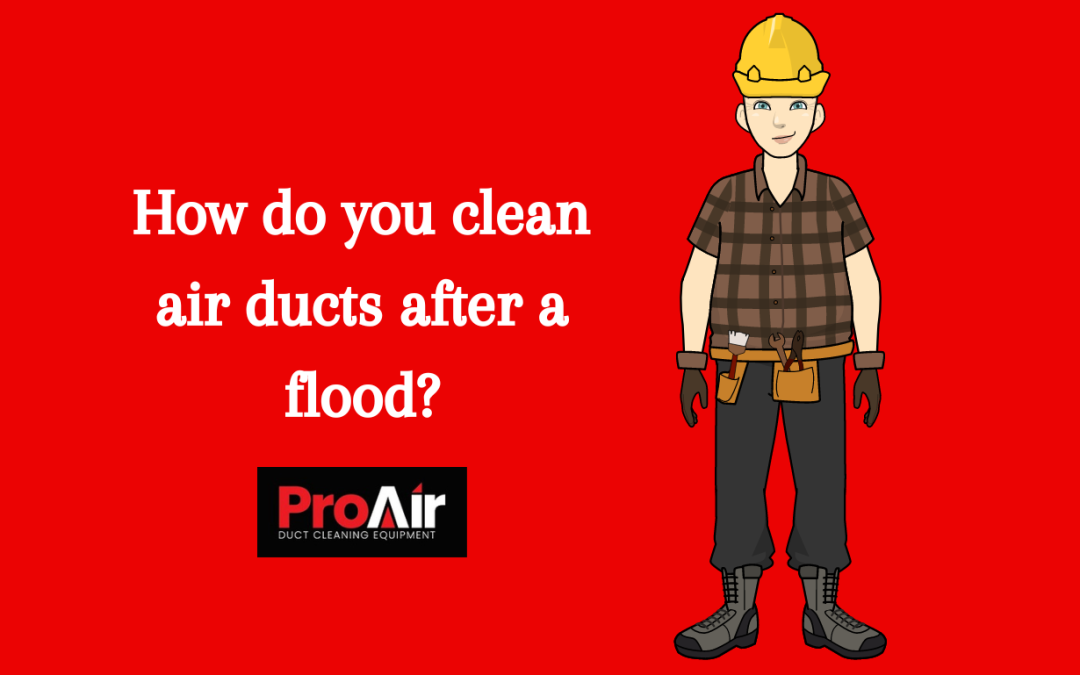Cleaning after a flood is a hassle, especially when it comes to your air ducts. Flood water can cause corrosion, which affects the system’s performance. It can also cause fire or explosion. Therefore, it is important to either clean it or have it replaced after a flood. One could use the ProAir air duct cleaning equipment to do the job. ProAir duct cleaning equipment helps you to clean the ducts effectively with the help of their different types of equipment.
If you are one of those people who like to do most of the jobs yourself, here are some ways to easily clean your air ducts after a flood. The first step is to remove all the insulation around and inside your HVAC system components. Remember to discard it under federal, state, and local regulations.
Invest in the right tools
Cleaning the air ducts is not an easy job. Therefore, make sure you have the following before you start cleaning the air ducts after a flood.
- Vacuum Cleaner:
Buy a heavy-duty vacuum cleaner with a long hose. It should also be able to reach the tight corners to make the job easy.
- Screwdriver:
Get a sturdy screwdriver, as most air ducts and vents are usually closed with screws or fasteners. You will have to unfasten them to clean them properly.
- Brush:
You will need a dusting brush with a long handle. A brush with stiff bristles would be perfect for helping you reach tough spots and deep clean.
- Cleaning cloths:
You will see a lot of dust on your ducts left behind after the water recedes. A microfiber cloth or paper towel can come in handy to clean the dust off.
- A new filter:
Flood water can cause buildup and clog the ducts. You will have to replace your old air filters once you are done cleaning. Remember to buy a compatible size filter to avoid stress.
Cover the supply registers and clean them:
Cover all the supply registers with a cleaning cloth to avoid dust going into your homes during cleaning. Lift the grills, and cover them with a cloth. You may have to clean the supply registers as well if there is too much build-up on them to get clean air. You can clean the register’s pipes and cavities as well if needed.
- Turn the fan on:
Once the supply register is covered, you can turn the fan on for a few minutes before cleaning the ducts. This will allow the debris to loosen up for you to clean it easily.
- Turn the power off:
After running the fan for a few minutes, turn the power off. Leaving it on poses safety risks while you clean it. This is the best time to disinfect all the surfaces of the unit.
- Unscrew the duct covers:
Open the covers and grills using the screwdriver. Clean the grills with a cleaning cloth. You can also use soap and water to remove the gunk left behind by the flood water.
- Clean the air ducts:
This is the major part of work, cleaning the air ducts to get fresh air around the house. Use your vacuum cleaner to clean the ducts thoroughly. Reach out to each corner, nook, and cranny to remove the build-up. You can use the brush to scrub spots with signs of mold and mildew. Make sure you dust each place you clean with a cleaning cloth at the end. You will also have to clean the blower compartment before your turn the power back on. Remember to be extra cautious around the furnace to avoid any damage to it or injuries to yourself.
- Change the filter:
Contact an expert to check the damage done by flood water. If the unit is cleared, you can replace the filters and run the system for 72 hours without anyone in the house. If you plan to replace the HVAC unit, consider upgrading to save energy costs.
Final Note:
So, it is not a very difficult job to clean your air ducts after a flood. You may have to do it a couple of times before you become an expert in cleaning your air ducts. Remember, if you miss a spot with mold or mildew, it can spread quickly. If you still want to deep clean your air ducts, you can always use the ProAir duct cleaning equipment and enjoy fresh air once again in your home.

